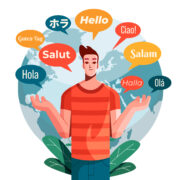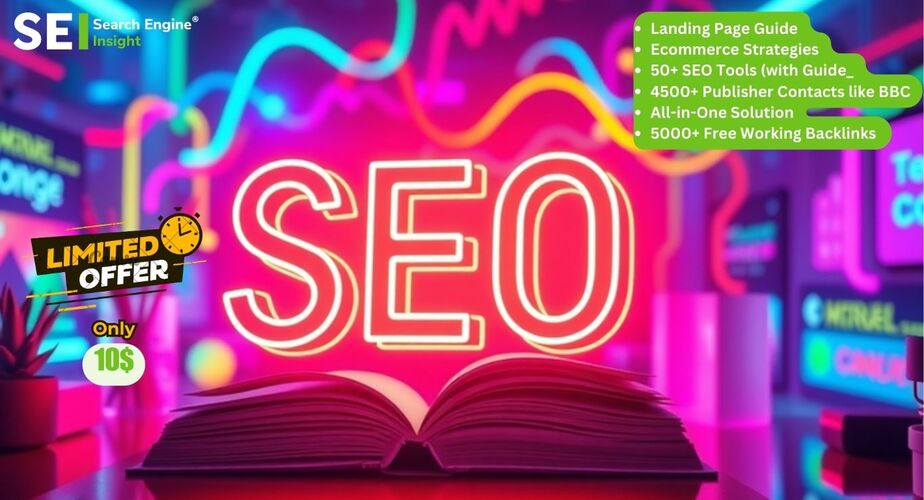Multilingual SEO Made Easy: Helping Small Teams Reach Global Audiences with AI Translation
Over 75% of internet users speak a language other than English. Despite this, most online content is still created in English—leaving vast segments of the internet underserved and largely invisible to search engines in other languages.
For small marketing and SEO teams, this presents both a challenge and a massive opportunity. Expanding your reach globally no longer requires massive localization budgets or in-house translators. With the rise of AI-powered translation tools, it’s now possible to turn your top-performing English content into multilingual assets optimized for organic growth.
This article is designed for marketers, content strategists, and SEO professionals looking to take their first confident step into multilingual SEO—without the overwhelm.
The SEO Power of Multilingual Content
Multilingual content isn’t just a bonus—it’s a proven growth accelerator. Here’s why it plays a critical role in your SEO strategy:
-
Greater Organic Reach
Creating content in multiple languages allows your pages to rank for non-English search queries, unlocking access to untapped global audiences and driving more qualified traffic.
-
Higher Conversion Rates
Studies consistently show that users are more likely to engage and purchase from websites presented in their native language. Localization builds trust, boosts time-on-site, and drives better conversion metrics.
-
Less Competitive SERPs
English-language keywords are fiercely competitive. But in regions like Southeast Asia, Latin America, and Eastern Europe, search landscapes are less saturated—giving you a clearer path to rankings, visibility, and return on investment.
Real-World Impact
A French travel blog experienced a 30% traffic surge in just three months after translating 10 of their top-performing posts into Spanish. Likewise, a SaaS company that localized landing pages for Poland and Romania saw signup rates surpass those of their domestic market.
Bottom Line: Multilingual SEO isn’t just about translation—it’s a smart, scalable way to grow your global footprint.
The Small Team Challenge: Budget, Time & Consistency
While the advantages of multilingual SEO are clear, many small teams struggle to act on them due to three persistent hurdles:
-
Limited Resources
Expanding into new markets isn’t cheap. Hiring native-speaking translators, international SEO experts, and managing localization workflows can quickly stretch a small team’s budget. Each new language adds layers of cost—from content creation and editing to quality assurance.
-
Keyword and Brand Inconsistency
Without a streamlined system, it’s easy for keyword strategies to become fragmented across languages. Brand voice, tone, and messaging often get lost in translation, leading to content that feels disjointed and off-brand. This not only hurts SEO rankings but also erodes user trust.
-
Slow Turnaround Times
Traditional translation processes are often slow and clunky. Content can get stuck in review cycles, delaying campaign rollouts. By the time localized assets are approved, the original marketing opportunity may already be gone.
These obstacles often create a frustrating loop—ambitious international SEO plans get delayed, deprioritized, or abandoned altogether. The result? Growth potential left untapped, and competitors getting there first.
Enter AI Translation: Scalable Solutions for Multilingual SEO
Multilingual SEO is becoming easier to manage, even for small teams, thanks to accurate AI-powered tools like MachineTranslation.com. As one of the most accurate translation platforms available, it supports over 270 languages and brings together multiple translation engines in one place. This makes it possible to scale global content creation without needing a large team or complex workflows. With built-in features for tone customization, keyword consistency, and side-by-side editing, teams can localize content more efficiently—while staying aligned with their SEO strategy.
How It Works:
Upload your content (e.g., blog post, product description, landing page) and get multiple AI translations side-by-side. MachineTranslation.com lets you choose the best one, refine it using your personal AI Translation Agent, and apply keyword or tone preferences that are remembered over time.
Key Features That Make It Ideal for SEO Teams:
Cost Efficiency:
Registered users get 100,000 free words per month—unregistered users get the same as a one-time free credit. Compared to traditional translation vendors, you can cut costs by up to 90%.
Step-by-Step: How to Integrate AI Translation into Your SEO Workflow
Step 1: Audit Your Existing Content
Start by analyzing your current top-performing pages. Look for blog posts, landing pages, and product descriptions that are driving the most conversions, traffic, and engagement. Use analytics tools to identify which pages are already performing well in specific markets.
Step 2: Conduct Keyword Research
Before jumping into translations, conduct keyword research for each target market. Identify high-volume, low-competition keywords in your selected languages. Consider local search behavior and specific terms that resonate with your target audience, ensuring alignment with local SEO trends.
Step 3: Choose Your Target Languages
Select the languages that align with audience demand and traffic sources. Focus on emerging markets with lower competition, where localized content can give you a competitive advantage. Use your keyword research to prioritize languages with the best potential for growth.
Step 4: Translate with AI
Leverage MachineTranslation.com to translate your content while preserving crucial SEO elements:
Ensure your AI translations are optimized for the target market’s language nuances and SEO requirements.
Step 5: Apply Custom Preferences
The AI Translation Agent lets you tailor translations to your specific needs:
- Choose tone and complexity to match your brand voice
- Maintain consistent product terminology across all languages
- Save custom guidelines for future translation projects, ensuring consistency and efficiency
Step 6: QA and Human Verification
For pages with critical content (such as product details, legal documents, or medical information), ensure a thorough quality check. Opt for Human Verification to ensure accuracy, precision, and cultural relevance.
Step 7: Implement hreflang Tags
To avoid duplicate content issues and help Google serve the right content to the right audience, implement hreflang tags. These tags tell search engines which version of your page should appear for specific regions or languages, maximizing your SEO impact.
Real-World Examples: Small Teams Expanding Globally
-
Swedish Beauty Brand: Scaling Quickly Across Markets
A Swedish beauty brand leveraged MachineTranslation.com to launch 100+ product SKUs in multiple markets. The platform’s AI handled the majority of translations, while Human Verification ensured compliance with EU labeling regulations. Result: A successful full-market launch in just 30 days, enabling rapid entry into international markets.
-
Aerospace Firm: Gaining Traction in China
An aerospace company used the platform to translate technical documents and marketing content into Mandarin for the Chinese market. By utilizing Glossary Tools, they ensured technical terms, such as “hybrid VTOL drone,” were consistently translated across all materials. Outcome: A 40% increase in lead conversions from Chinese partners, significantly boosting their market share.
Conclusion
Scaling your business internationally no longer requires a large team or a hefty budget. With the power of AI translation tools, you can efficiently create multilingual content that resonates with new audiences globally, opening up vast growth opportunities.
AI-powered tools provide a cost-effective alternative to manual translation services. You can quickly launch content in multiple languages, allowing your business to expand into new markets with minimal overhead. Whether you’re targeting one new market or multiple, AI translation makes global growth more accessible and sustainable.
Start small—translate a top-performing piece of content and target two new markets. Measure the impact of AI translation tools on your SEO, and watch how they help your business grow internationally. With AI translation, multilingual SEO isn’t just an aspiration; it’s your next step toward global success.




